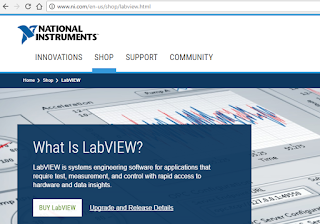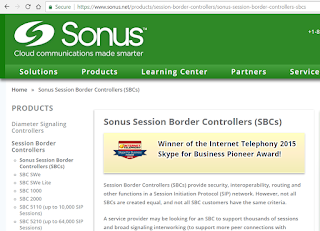Will large enterprises and Service Providers customers embrace Cisco's high-performance networking platforms built with its own ASICs and OSx, or continue to push for white box platforms based on merchant silicon and fully open software? Will the global ransomware outbreaks of the past two months play to Cisco's advantage as enterprises re-evaluate their security posture and perhaps adopt a more core network-centric approach?
Cisco provided an update on its strategic vision at its recent Cisco Live! customer event in Las Vegas. Materials from this event can be found on the company's Investor Relations web page.
Cisco currently is in an enviable market position. It holds the leading market share in at least 10 market categories; it has 20,000 people working in sales and perhaps 60,000 erstwhile partners around the world. For its most recent fiscal quarter, ended April 29th, Cisco reported revenue of $11.9 billion, GAAP net income of $2.5 billion, or 50c per share, and non-GAAP net income of $3.0 billion, or 60c per share. Sales fell by 1% compared to a year earlier but the company deliver a 5% growth in net income, thanks to cost-cutting measures. Cisco's balance sheet most recently showed $125.950 billion in cash, cash equivalents, and other assets, clearly a mountain of gold that could be used for strategic acquisitions or simply returned to shareholders. Cisco's market cap stands at $160.4 billion. Compare all of this to its nearest rivals, especially the big European concerns, and Cisco’s position is quite strong.
Mergers and acquisitions strategy
Cisco's management perpetually faces the question of execution in a market that overall has been pretty flat and declining in many sectors and geographies. With a gross margin consistently in the mid-60 percentage range, the company is vulnerable to lower cost competitors. Huawei and ZTE, in particular, deliver highly competitive products at lower cost. Cisco is also known for making a lot of acquisitions. Over the years some have been hugely successful for the company, such as the Ethernet switching acquisitions (Crescendo, Grand Junction and Kalpana), while others were huge failures (e.g. Scientific Atlanta).
During briefings at Cisco Live!, Chuck Robbins said the company remains open to strategic mergers and acquisitions that are capable of augmenting and accelerating its core innovation. The company has 160 staff members dedicated to M&A integration. Over the past four years, 80% of the acquisitions have been software related- this is a trend likely to continue. The Meraki and Sourcefire acquisitions were called out for delivering double digit returns.
The differentiated vision of intent-based networking
Cisco new intent-based networking vision, which includes a new DNA Center for orchestrating control over networking traffic, the new ASIC-powered Catalyst 9000 series switches, and a unique ability to analyse encrypted traffic, is already being tested by 75 global organisations. Naturally, Cisco finds measurable improvements for customers testing the new solution, claiming: a 67% time savings for network provisioning, 48% reduced security breach impact, 61% reduced opex. It is too early to see how premium the customers are willing to pay for better management capabilities.
Better security is perhaps the stronger argument for Cisco to make for its silicon-differentiated platforms. In his talk to the investment community, David Goeckeler SVP/GM, Networking and Security Business, argued forcefully that effective security requires a network that can find threats, containing threats, and delivering automated remediation. This depends on leveraging network data, a resource that new ASIC-driven switching platforms can deliver in abundance. When you put together deep analytics and machine learning in an automated policy enforcement system, you have the fundamentals for intent-based infrastructure. Software-defined access can be used to limit the lateral movement for threats. Automated responses mean that human management of network is replaced.
Moving to a recurring revenue model

Perhaps the biggest change in direction for Cisco is that it is actively moving existing offers to subscriptions. In other words, software that used to be consumed on a perpetual basis will now become recurring revenue. Already, more than $2 billion of revenue that could have been recognised under the old model is not being collected on a recurring licensing basis. Over the FY17-20 timeframe, Cisco expects this to grow to 2-3% of total revenue. When factoring in other services already on a recurring model, such as Spark/WebEx, Meraki software, Jasper and Cisco ONE, the total percentage of recurring revenue is expected to grow from 26% in FY 14 to 37% in FY20. The security offers are expected to drive the subscription business. The net effect is improved predictability of future revenue.
Financial guidance for the next 3-5 years
Given its size, Cisco can hardly expect to grow much faster than the market. Overall, the updated financial guidance calls for revenue growth of 1-3%, stable margins, and EPS growth in the mid-single digits. Cisco said it aims to return over 50% of free cash flow to shareholders. Over the past ten years this has been the case. Approximately 50% of cash has been used for share repurchase and about 15% for dividend payments.
The 3-5-year growth forecast is also broken down by segments:
Technology; Revenue growth
1. Infrastructure platforms flat
2. Security low to mid-teens
3. Applications high single digits to low teens
4. Services mid-single digits
To summarise, Cisco is betting that differentiated innovation will pay off because customers value the deeply embedded security and automation. Though revenues will only grow in the 1-3% range, earning per share should continue to expand as the company moves to a recurring subscription model for up to 37% of its revenue. Cisco promises to return 50% or more of free cash flow to shareholders, and the probability of further mergers and acquisitions remains strong, especially for networking software and service start-ups.
















































